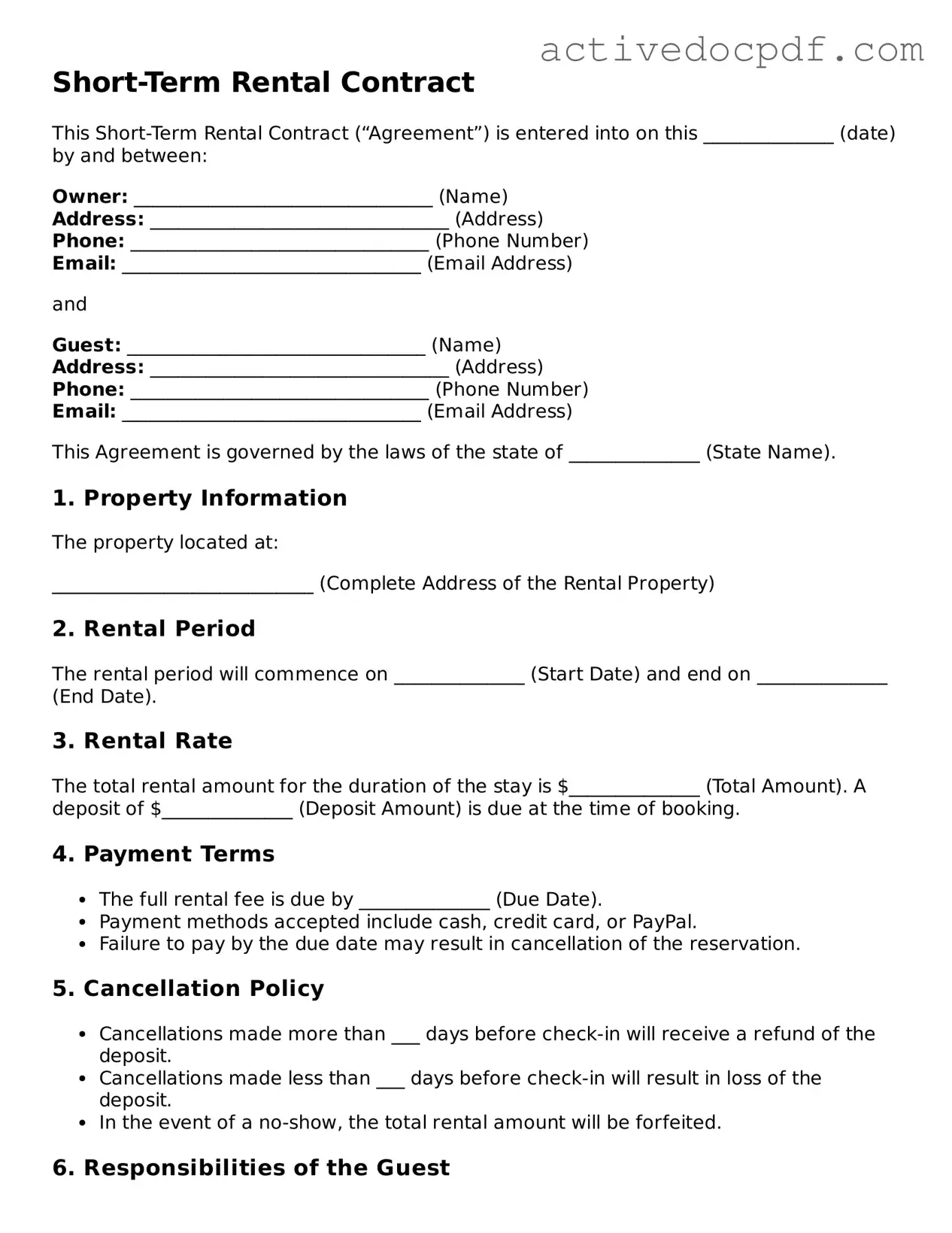What is a Short-Term Rental Contract?
A Short-Term Rental Contract is a legal agreement between a property owner (or host) and a guest who intends to rent the property for a limited period, typically less than 30 days. This contract outlines the terms of the rental, including payment details, house rules, and responsibilities of both parties.
Why do I need a Short-Term Rental Contract?
Having a Short-Term Rental Contract is essential for several reasons:
-
It protects the rights of both the host and the guest.
-
It clearly defines expectations, reducing the likelihood of misunderstandings.
-
It provides a legal framework in case of disputes.
What should be included in a Short-Term Rental Contract?
A well-drafted Short-Term Rental Contract should include:
-
Names and contact information of both parties.
-
Description of the rental property.
-
Rental dates and check-in/check-out times.
-
Total rental cost and payment schedule.
-
Security deposit details.
-
House rules and policies (e.g., pet policy, smoking policy).
-
Cancellation policy.
-
Liability and insurance information.
How do I fill out a Short-Term Rental Contract?
Filling out a Short-Term Rental Contract is straightforward. Start by entering the names and contact details of both parties. Next, provide a detailed description of the property, including its address. Specify the rental dates, costs, and any additional fees. Don’t forget to include house rules and any other relevant information. Review the contract carefully to ensure accuracy before signing.
Can I customize my Short-Term Rental Contract?
Yes, you can customize your Short-Term Rental Contract to fit your specific needs. While it’s important to include standard terms, you can add clauses that address unique situations, such as special requests from guests or additional fees for extra services. Just ensure that any modifications comply with local laws.
What happens if a guest violates the contract?
If a guest violates the terms of the Short-Term Rental Contract, the host has several options. First, address the issue directly with the guest to seek a resolution. If the problem persists, you may need to enforce penalties as outlined in the contract, such as retaining the security deposit or pursuing legal action. Documenting any violations can also be helpful if disputes arise.
Is a Short-Term Rental Contract legally binding?
Yes, a Short-Term Rental Contract is legally binding once both parties have signed it. This means that both the host and the guest are obligated to adhere to the terms outlined in the contract. If either party fails to meet their obligations, the other party may have legal grounds to seek remedies.
Where can I find a Short-Term Rental Contract template?
You can find Short-Term Rental Contract templates online through various legal websites, or you may consult with a legal document preparer. Many templates are customizable and can help you create a contract that meets your specific needs while ensuring compliance with local laws.
